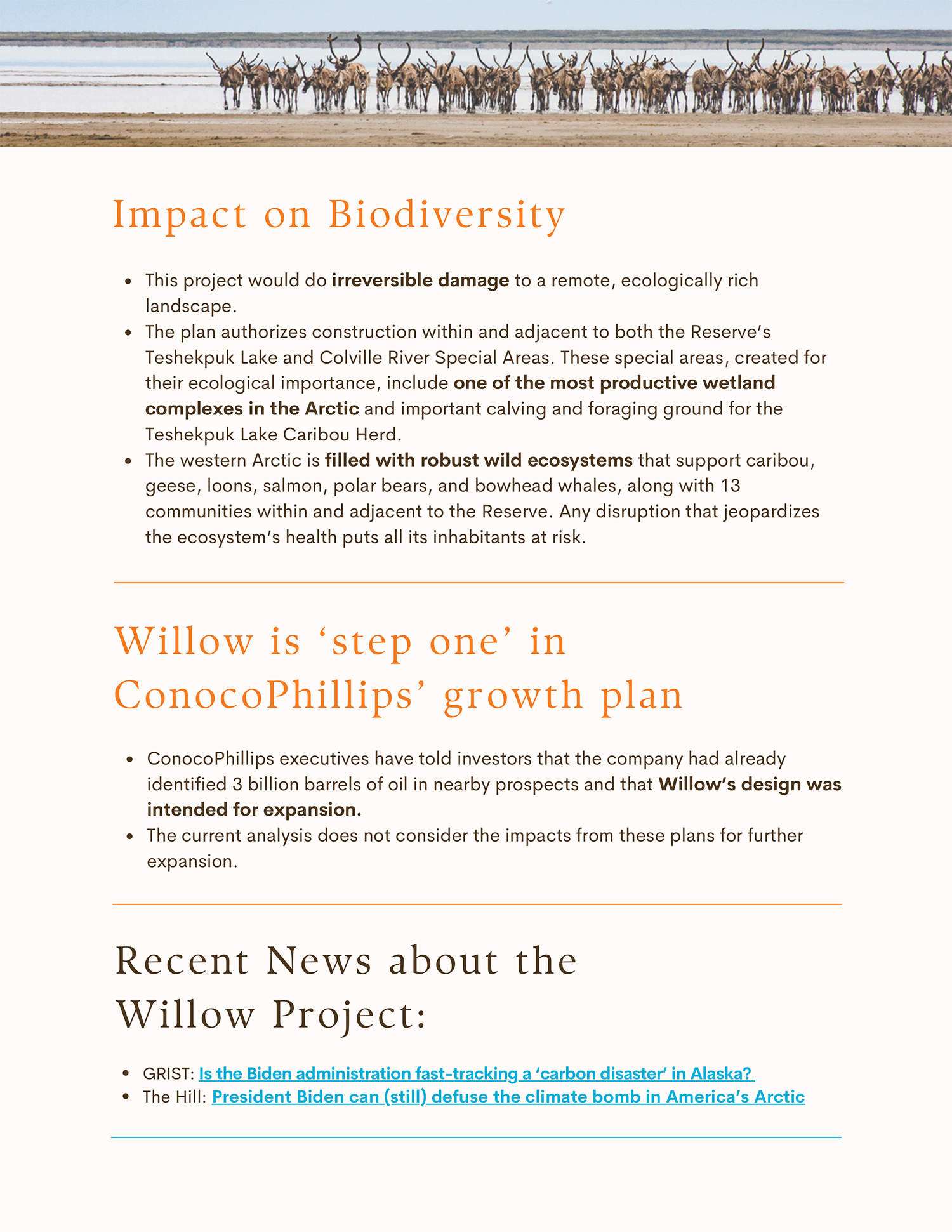
The National Petroleum Reserve-Alaska (Reserve) is an ecologically rich landscape that presents a one-of-a-kind climate opportunity for the nation.
The Reserve is essential to President Biden’s climate and conservation goals of reducing U.S. emissions, increasing land protections to reverse biodiversity loss, and growing natural carbon sinks by 2030.
ConocoPhillips’ Willow Project is by far the largest oil extraction project proposed on federal lands today.
Plans call for up to 250 wells, estimated to produce up to 629 million barrels of oil, locking in oil infrastructure in the rural Arctic for 30+ years
The Willow project is estimated to add up to 287 million metric tons of CO2 to the atmosphere over the next 30 years — equivalent to the annual emissions from 76 new coal-fired power plants.
The Willow project would unleash nearly double the planet-warming pollution that President Biden’s entire clean energy plan on public lands and waters is meant to prevent in the next decade. Willow is a climate disaster in-waiting.
Allowing this project to go forward as planned will lock in at least three decades of Arctic fossil fuel pollution at a time when scientists say the world must be rapidly transitioning away from fossil fuels.
Climate change is warming temperatures in Arctic Alaska at 4x the rate of the rest of the planet. With each passing year, the Arctic is especially hard hit by destabilizing on-the-ground effects including sea ice melt, permafrost thaw and coastal erosion.
This project would do irreversible damage to a remote, ecologically rich landscape.
The plan authorizes construction within and adjacent to both the Reserve’s Teshekpuk Lake and Colville River Special Areas. These special areas, created for their ecological importance, include one of the most productive wetland complexes in the Arctic and important calving and foraging ground for the Teshekpuk Lake Caribou Herd.
The western Arctic is filled with robust wild ecosystems that support caribou, geese, loons, salmon, polar bears, and bowhead whales, along with 13 communities within and adjacent to the Reserve. Any disruption that jeopardizes the ecosystem’s health puts all its inhabitants at risk.
ConocoPhillips executives have told investors that the company had already identified 3 billion barrels of oil in nearby prospects and that Willow’s design was intended for expansion.
The current analysis does not consider the impacts from these plans for further expansion.


